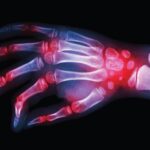Lastly, the PtCs encourage the use of non-pharmacological modalities like exercise, psychological interventions (e.g., cognitive behavioral therapy) and education in all patients with D2T RA.13 Increasing self-efficacy—the ability to control or manage various aspects of their disease—profoundly impacts the well-being of patients.14
Professor Nagy says, “Non-pharmacological therapy, self-management programs and exercise are essential in RA. Clearly, more well-designed trials are needed [in this regard] too.”
High-quality evidence to guide recommendations was scarce, leading to low strength of recommendations. But the Task Force proposed an agenda to help guide further research. Professor Nagy states, “The definition is new. D2T RA is a whole new entity. We hope that there will be significant interest regarding our work, and that our proposal will be used in daily clinical practice and promote further research.”
Conclusion
EULAR has taken an important step forward in improving the care of our patients with D2T RA. A standardized definition may inform future clinical trials, and evidence-based guidance for the care of this population may lead to improved outcomes. Professor Nagy concludes, “This is the major message of our work: avoid overtreatment [and also overdiagnosis])!”

Samantha C. Shapiro, MD, is an academic rheumatologist and an affiliate faculty member of the Dell Medical School at the University of Texas at Austin. She is a member of the ACR Insurance Subcommittee.
References
- de Hair MJH, Jacobs JWG, Schoneveld JLM, et al. Difficult-to-treat rheumatoid arthritis: An area of unmet clinical need. Rheumatology (United Kingdom). 2018 Jul 1;57(7): 1135–1144.
- Smolen JS, Landewé RBM, Bijlsma JWJ, et al. EULAR recommendations for the management of rheumatoid arthritis with synthetic and biological disease-modifying antirheumatic drugs: 2019 update. Ann Rheum Dis. 2020;79(6):685–699.
- Fraenkel L, Bathon JM, England BR, et al. 2021 American College of Rheumatology guideline for the treatment of rheumatoid arthritis. Arthritis Rheumatol. 2021 Jul;73(7):1108–1123.
- Nagy G, Roodenrijs NM, Welsing PM, et al. EULAR definition of difficult-to-treat rheumatoid arthritis. Ann Rheum Dis. 2021 Jan;80(1):31–35.
- Roodenrijs NMT, de Hair MJH, van der Goes MC, et al. Characteristics of difficult-to-treat rheumatoid arthritis: Results of an international survey. Ann Rheum Dis. 2018 Dec;77(12):1705–1709.
- Contreras-Yáñez I, Ponce De León S, Cabiedes J, et al. Inadequate therapy behavior is associated to disease flares in patients with rheumatoid arthritis who have achieved remission with disease-modifying antirheumatic drugs. Am J Med Sci. 2010 Oct;340(4):282–290.
- Buch MH, Eyre S, McGonagle D. Persistent inflammatory and non-inflammatory mechanisms in refractory rheumatoid arthritis. Nat Rev Rheumatol. 2021 Jan;17(1):17–33.
- Nagy G, Roodenrijs NMT, Welsing PMJ, et al. EULAR points to consider for the management of difficult-to-treat rheumatoid arthritis. Ann Rheum Dis. 2022 Jan;81(1):20–33.
- Roodenrijs NMT, van der Goes MC, Welsing PMJ, et al. Difficult-to-treat rheumatoid arthritis: Contributing factors and burden of disease. Rheumatology (Oxford). 2021 Aug 2;60(8):3,778–3,788.
- Roodenrijs NMT, Kedves M, Hamar A, et al. Diagnostic issues in difficult-to-treat rheumatoid arthritis: A systematic literature review informing the EULAR recommendations for the management of difficult-to-treat rheumatoid arthritis. RMD Open. 2021 Jan;7(1):e001511.
- Shapiro SC. Biomarkers in rheumatoid arthritis. Cureus. 2021 May;13(5):e15063.
- Ritschl V, Stamm TA, Aletaha D, et al. 2020 EULAR points to consider for the prevention, screening, assessment and management of non-adherence to treatment in people with rheumatic and musculoskeletal diseases for use in clinical practice. Ann Rheum Dis. 2021 Jun;80(6):707–713.
- Roodenrijs NMT, Hamar A, Kedves M, et al. Pharmacological and non-pharmacological therapeutic strategies in difficult-to-treat rheumatoid arthritis: A systematic literature review informing the EULAR recommendations for the management of difficult-to-treat rheumatoid arthritis. RMD Open. 2021 Jan;7(1)e001512.
- Taal E, Rasker JJ, Wiegman O. Patient education and self-management in the rheumatic diseases: A self-efficacy approach. Arthritis Care Res. 1996 Jun;9(3):229–238.


